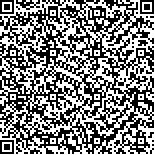下载中心
优秀审稿专家
优秀论文
相关链接
摘要

光能利用率表征植被通过光合作用将所截获/吸收的能量转化为有机碳的效率,是遥感估算植被生产力的关键参数。由于植被分布和气候环境的综合影响,光能利用率表现出显著的空间异质性和时间动态性,光能利用率的不确定性成为后续生产力模型估算精度不高的重要原因。本文以Fluxnet全球通量站点数据和MODIS LAI/fPAR产品为数据源,比较了5种遥感植被生产力模型中的光能利用率估算方法,并在此基础上考虑光照散射条件对光能利用率的影响,结合晴空指数,利用逐步线性回归方法和参数优化方法建立不同植被类型的光能利用率估算模型。验证结果表明,考虑晴空指数可提高光能利用率估算精度,两种方法估算得到的光能利用率值RMSE均低于0.5 gC·MJ-1,逐步线性回归法尽管机理欠缺,但由于选择因子较多,光能利用率估算精度较高(R2=0.461,RMSE=0.403 gC·MJ-1);广泛应用的参数化方法由于考虑的因子较少、模型形式较固定,光能利用率估算精度稍低(R2=0.306,RMSE=0.489 gC·MJ-1)。本文所建立的光能利用率估算模型可应用于区域或全球植被光能利用率及生产力的估算。
Light Use Efficiency (LUE) characterizes the efficiency with which vegetation converts intercepted or absorbed solar radiation into organic dry matter through photosynthesis. LUE is a key parameter to estimate vegetation productivity, especially in the widely used methods of global or regional Gross Primary Productivity (GPP) and Net Primary Productivity (NPP) estimation with remote sensing data, such as MODIS vegetation productivity algorithm (MOD17), the Carnegie-Ames-Stanford Approach (CASA), the Vegetation Photosynthesis Model (VPM) and the Eddy Covariance-Light Use Efficiency approach (EC-LUE). In these methods, LUE was estimated by multiplying temperature, water and other stress factors with maximum LUE at optimal environment conditions. Due to the combined effects of vegetation type and climate, LUE shows significant spatial heterogeneity and seasonal variation. The uncertainty of LUE estimation is an important fact for the low accuracy of subsequent productivity models. It is necessary and significant to improve the accuracy of LUE estimation.Based on global Fluxnet site data and MODIS LAI (Leaf Area Index)/fPAR (Fraction of Photosynthetic Active Radiation) products, this paper compared five existing LUE estimating methods (MOD17, CASA, Dry Matter Productivity algorithm of Global Monitoring for Environment and Security (GME DMP), VPM, EC-LUE) first. And in order to reflect the difference of LUE between the sunlit and shaded leaves, we took the Clearness Index (CI, the fraction of solar incident radiation on the surface of the earth to the extraterrestrial radiation at the top of the atmosphere) into account and established two LUE estimation models by stepwise linear regression method and parameter optimization method respectively. In the parameter optimization method, we first determined the maximum LUE of the sunlit and shaded leaves for each type of vegetation by an optimization algorithm developed at the University of Arizona (SCE-UA), and then we estimated the actual LUE by adjusting the maximum LUE with CI, temperature and water stress factors.The comparison of five existing LUE estimation methods shows that the R2 between estimated LUE and fluxnet LUE is within 0.028—0.282, and the RMSE range is 0.545—0.681 gC·MJ-1. The MOD17 method has the lowest RMSE at 0.545 gC·MJ-1, followed by EC-LUE with 0.579 gC·MJ-1. While R2 is highest for EC-LUE (R2=0.282), and followed by CASA (R2=0.185), which is related to the factor of evaporation fraction (EF) adopted by both methods. The correlation coefficient between EF and LUE is higher than other factors. On the whole, EC-LUE performs best (R2=0.282, RMSE=0.579 gC·MJ-1) among these five methods.The validation results show that the inclusion of Clearness Index can improve the accuracy of LUE estimation, and the RMSE by the stepwise linear regression method and parameter optimization method are both less than 0.5 gC·MJ-1. Although the stepwise linear regression method lacks the mechanism, the estimation accuracy of LUE (R2=0.461, RMSE=0.403 gC·MJ-1) is higher due to the more selected factors. The parameterization method has a slightly lower accuracy (R2=0.306 , RMSE=0.489 gC·MJ-1) due to fewer factors and a relatively fixed model form. The LUE estimation models established in this paper can be used for the estimation of regional or global LUE and vegetation productivity.

